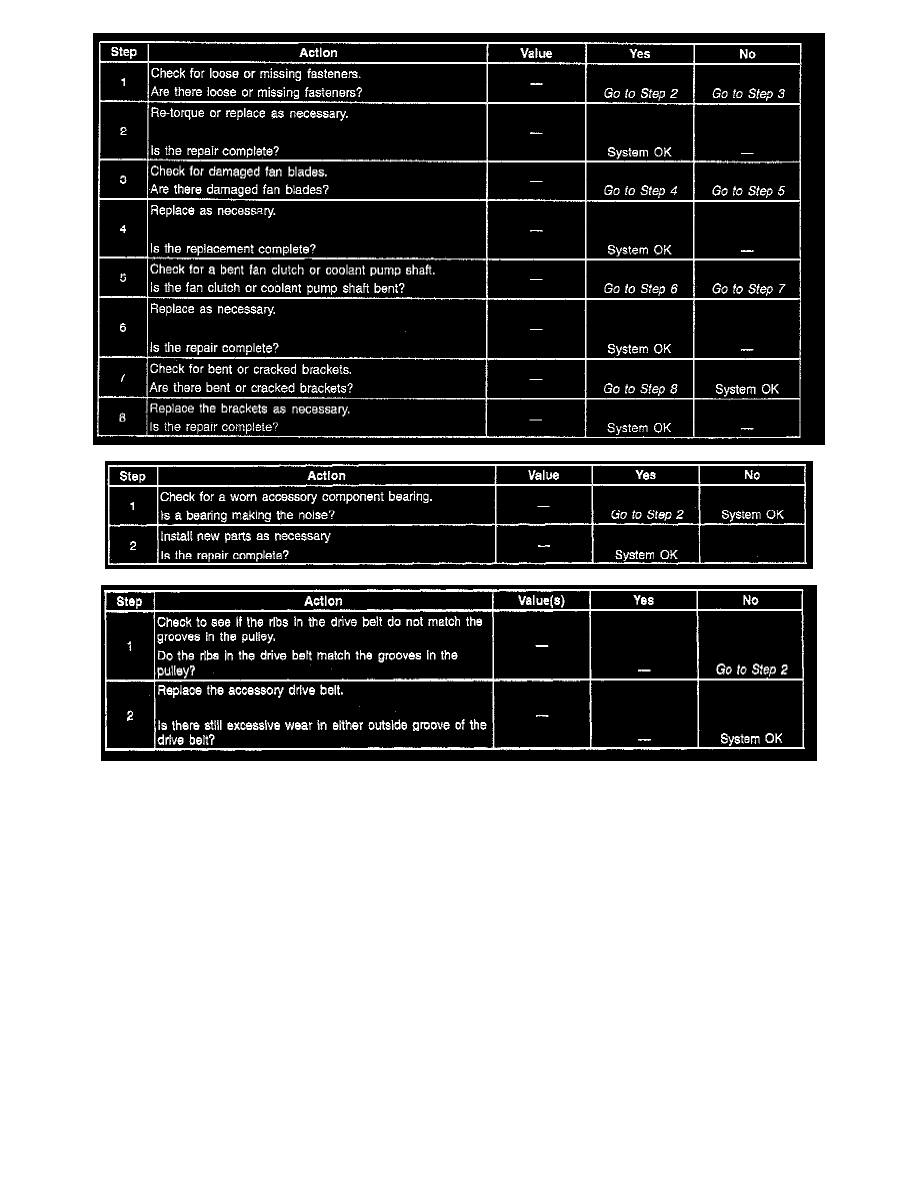Grand Prix V6-3.8L SC VIN 1 (1997)

Noise Definition
NOTE: Drive belt noise may be described as a thumping noise heard at, or just above idle speed, as a result of belt pilling. In a single-belt accessory
drive, belt pilling occurs when' smell particles of belt material separate from the belt grooves, and form small balls or pills in the belt grooves. While
some belt pilling is normal, excessive pilling can cause a thump or knocking as the pills pass over various pulleys. This causes the belt to repeatedly
jump off of and slap onto the pulley.
BELT NOISE DIAGNOSIS
The thump or knocking noise easily misdiagnosed as an engine noise. In order to diagnose belt pilling, adhere to the following procedure:
1. Remove the drive belt.
2. Run the engine for no more than 30 to 40 seconds, in order to confirm that the engine noise disappears.
3. Inspect the power steering pulley for proper alignment.
4. Inspect all other pulleys for excess paint, debris or pills in the grooves.
5. Clean the pulleys with a wire brush, as necessary.
NOISE DEFINITIONS
The following are symptomatic noises of the accessory drive belt system:
1. Chirping: A high pitched noise that is usually heard once per revolution of a pulley or a belt. It is most common on cold, damp mornings.
Verify this condition by squirting water onto the belt. The noise will momentarily stop.
2. Squeal: A loud screeching noise that is caused by a slipping belt (this is unusual for a multiple ribbed belt). The noise occurs when a heavy
load is applied to the belt, such as an air conditioning compressor engagement, snapping the throttle, or slipping on a seized pulley.
3. Whine: A high pitched continuous noise that may be caused by a failed component bearing.
